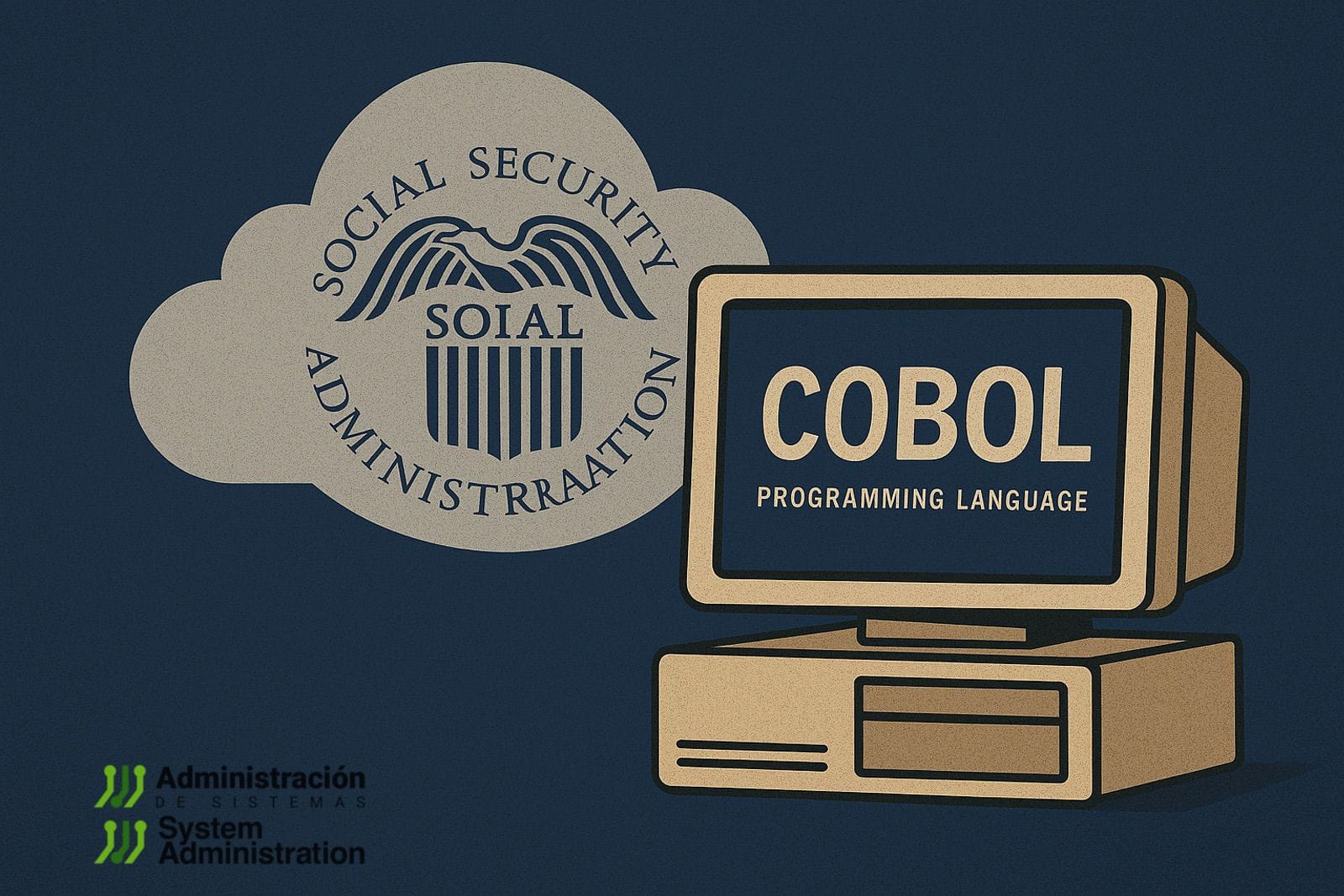Sure! Here’s the translation of your text into American English:
The U.S. government, through the newly established Department of Government Efficiency (DOGE), has launched an initiative that has raised all alarms in the tech community: rewriting the source code of the Social Security Administration (SSA) systems in just a few months. The announcement has generated concern among software engineers, legacy systems specialists, and critical infrastructure experts, who consider the plan not only rushed but potentially disastrous.
The underlying reason is well known: the core of the system that manages pensions and social benefits for over 70 million people in the United States is written in COBOL (Common Business Oriented Language), a programming language created in 1959 for accounting, finance, and bulk data processing applications. Its design, focused on readability and reliability, made it the de facto standard for financial and governmental institutions throughout much of the 20th century.
Over the decades, COBOL has solidified its status as a cornerstone of critical software. According to industry estimates, more than 800 billion lines of COBOL code are still active worldwide, many of them in systems that cannot afford failures: banks, insurance companies, airlines, and, of course, state agencies. In the case of the U.S. Social Security, the system contains tens of millions of lines written in COBOL, interconnected with databases, historical records, and automated processes that have been running uninterrupted for over 40 years.
A Complex and High-Risk Migration
Replacing this system with a new one is not as simple as translating code. It involves recreating all business logic and processing rules, line by line, with extreme precision. “We’re talking about decades of validations, actuarial calculations, legal adjustments, and exception management carefully coded over time,” explains an expert in government systems modernization. “Any error could disrupt payments, duplicate benefits, or even erase records.”
Moreover, institutional knowledge of COBOL is becoming increasingly scarce. Many engineers who mastered it have retired or transitioned to other sectors. The lack of trained personnel means any migration will require additional efforts for documentation, reverse engineering, and parallel validation. Attempting to do this in just a few months, as DOGE proposes, contradicts the accumulated experience in the sector, which recommends processes taking between 3 and 7 years for safe transitions in critical legacy systems.
A recent example illustrates the risks: during the COVID-19 pandemic, several unemployment benefit systems written in COBOL collapsed under the avalanche of applications, and the shortage of qualified personnel hindered rapid software adaptation. In the wake of that crisis, some agencies began pilot modernization projects, incorporating intermediate layers and APIs without completely removing the COBOL core. This hybrid approach has proven to be safer and more sustainable than an immediate total rewrite.
Why Not Simply “Modernize”?
One reason COBOL systems remain operational is their proven reliability. Many critical applications written in COBOL are estimated to have error rates below 0.1%, a figure that many modern developments still fail to reach. Furthermore, since it is designed to execute massive sequential tasks, COBOL remains efficient in computationally intensive operations, such as those required by the SSA.
Modernization can take various forms: from cloud emulation to modular rewriting through microservices or gradual integration of new interfaces. However, all approaches share one principle: respect the time needed for auditing, validating, testing, and training technical personnel. DOGE’s plan, in contrast, proposes an immediate transition, raising concerns about undetected errors, historical data loss, or even security breaches.
A Question of Technology Policy
The backdrop of this decision is also political. Under the banner of “government efficiency” and modernization, DOGE seeks to portray an agile, results-oriented administration. However, several analysts warn of the danger of confusing speed with efficacy, especially in contexts where system stability is an absolute priority.
In fact, the rewriting of COBOL systems has become one of the major debates in software engineering within public administration. Countries like Germany and Japan have opted to maintain COBOL with gradual upgrades, while other nations have failed in attempts at complete replacement, as was the case with Canada’s tax system in the 2000s, which returned to its COBOL architecture after a decade and billions of dollars invested.
Conclusion
At a time when society relies more than ever on stable digital services, the migration of the source code of the U.S. Social Security system must be approached with technical responsibility, long-term vision, and without shortcuts. Despite its decades of age, COBOL continues to perform its function efficiently and robustly.
DOGE’s proposal, rather than representing a leap toward modernization, could become a dangerous gamble with incalculable consequences. As many veteran engineers remind us: “If it’s not broken, don’t rush to rewrite it.”
Source: COBOL and Critical Systems

